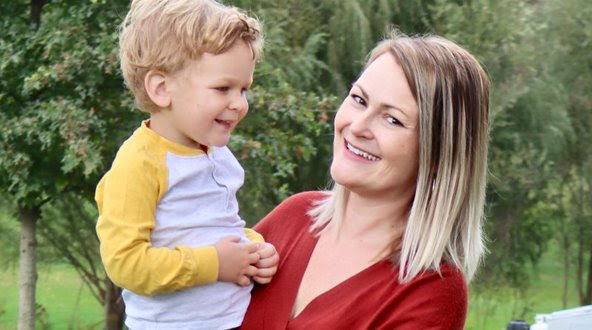
by IABA Team | Apr 25, 2022
Shopping with children isn’t easy. From the busy environments to the constant ‘I wants’, children will always find a way to make your trip to the store more difficult. The discomfort an autistic child may feel during shopping experiences can bring some other challenges into the mix.
This article was written to give some general tips on how to make your child feel more comfortable during shopping trips. And a happy child may help mom or dad have an easier shopping experience.
Planning Your Shopping Trips
While knocking out all your shopping needs in one trip sounds nice, it may not be the best option for your child. Extended shopping trips can throw off a child’s schedule. Spreading out your shopping may allow your child to get more comfortable with the trips in general.
Sticking to the principle of shorter trips also allows parents to introduce children to different environments at different times. This can help familiarize your child with new places and activities that happen in social situations.
And be sure to keep ‘big purchase’ shopping experiences kid-free. If you are buying something that needs salespeople, paperwork, or consultation, you’ll definitely want to leave your child at home. These complicated sales can take a long time to complete and you may have to switch your focus from your child to the sale–which isn’t good for either of you!
Making Shopping Trips Easier
Just like most situations, shopping with an autistic child can be made easier by preparing for their potential discomfort. Some great things to bring on any shopping excursion include:
- Any must-have toys or objects
- Favorite snacks & drinks
- A list or other visual aid to show your child the shopping itinerary
On top of physical objects that can make shopping easier, there are also a few things you can do with your child to prepare. Be sure to talk to your child’s therapist about these practices to make sure they are in line with their program.
- Timeframe visual aids
- Picking out things at specific stores (snacks, clothes, toys, etc, depending on the store)
- Helping with the shopping (pushing a cart, holding a basket, using the credit card, etc)
- Practice behavior with potential rewards
Helping your child feel comfortable is paramount to a great shopping experience. Be sure to work with your child before any new shopping location to keep the attitudes and behaviors positive.
ABA Therapy from IABA Consultants
If you have questions regarding autism treatment, education, or plans to use ABA therapy, we are here for you! Our goal is to make sure no family is turned away due to financial constraints. Our therapy team would love to talk to you. Find the location closest to you and give us a call. We’re here for you.

by IABA Team | Apr 18, 2022
Haircuts are difficult for many young children. Adding sensory sensitivities to the equation can make haircut appointments even harder. This is why we want to talk about haircuts for autistic children and what can be done to make appointments easier.
This article is a continuation of the topics from the last two weeks (Dental Visit Tips for Children with Autism | Doctor Visit Tips for Children with Autism). These are important topics, as getting your child comfortable with important social situations, while difficult, is necessary.
Finding an Autism-Friendly Hair Stylist
There aren’t many comprehensive autism-friendly hairstylists or salon lists available on the internet. This doesn’t mean you’re out of luck when it comes to searching for a great place to get a haircut, however.
Some beauty professionals list autism-friendly on their websites. This makes using search engines to find them very easy. Use search terms like ‘autism haircut near me’ or ‘autism-friendly hair stylist’ to start your search.
If you are comfortable with addressing the sensory sensitivities your child has that may arise during a haircut appointment, be sure to ask about or make requests beforehand.
- No electric clippers, blowdryers, water, shampoo, etc.
- Any specific touching or holding of the hair
- Scheduling an appointment at a less busy time
Talking to your child’s therapist before a haircut may also be a big help in jogging your memory for things that may help.
Preparing for a Professional Haircut
Before an appointment with the hairdresser, there are a few steps you can take to ease your child into feeling more comfortable about the appointment.
- Take a few trips to the salon before the appointment to acquaint your child with the environment
- Practice with brushes and combs while your child is seated at home
- Make sure to note any sensory issues that could arise: noise from electric clippers and blow dryers, hair touching, using water, etc
- Make sure your child has toys or objects they can have during the haircut
ABA Therapy from IABA Consultants
If you have questions regarding autism treatment, education, or plans to use ABA therapy, we are here for you! Our goal is to make sure no family is turned away due to financial constraints. Our therapy team would love to talk to you. Find the location closest to you and give us a call. We’re here for you.

by IABA Team | Apr 11, 2022
Taking your child to the doctor for a checkup can be an ordeal, especially if your child has related sensory sensitivities. The setting, noises, number of people, and other things can lead to many different sensory issues.
Like last week’s blog on visiting the dentist, this week we wanted to focus on making trips to the doctor easier.
Finding an Autism-Friendly Pediatrician
There aren’t many comprehensive autism-friendly doctor or pediatrician lists available on the internet. This doesn’t mean you’re out of luck when it comes to searching for a great doctor, however.
Many medical professionals list autism-friendly on their websites. This makes using search engines to find them very easy. Use search terms like ‘autism pediatrician near me’ or ‘autism-friendly pediatrician’ to start your search.
It is also imperative to call the office with questions ready before scheduling an appointment. Things to talk about before scheduling an appointment should include:
- Anything regarding existing behavioral or developmental conditions and how they may affect the visit or appointment
- Any sensory sensitivities with light, noise, crowds, or other situational concerns
- Communication difficulties with your child (noises, nonverbal, etc)
- Any common triggers that may be found in a new setting
- If a special waiting area is available for children with sensory sensitivities or autism
- If your child has certain difficulties with waiting or new places you may want to ask about scheduling a specific appointment where you don’t have to wait. Be sure to tell the scheduler about concerns regarding waiting times.
Make sure to have a list ready so you don’t forget anything during the phone call.
Preparing for a Visit to the Doctor
As it can be for other activities and appointments, a visit to the doctor can potentially throw children with autism off their routine. Making sure your child has easied into a schedule where an appointment may fit in is a great first step to take.
Be sure to bring any toys or objects that will make your child feel comfortable during the visit. Remember–the waiting period can be just as difficult as the appointment, especially if the doctor is delayed.
Visiting the office before an appointment can also be very helpful to acclimate your child to a new environment. If you have concerns about the new environment, be sure to call the office and see if you can make a few short trips there before the appointment.
A few things to be sure to have on hand for a doctor’s appointment include:
- Any important toys or objects
- Snacks or drinks
- Prefilled paperwork (if any is given before the appointment)
- A plan to deal with any large outbursts or behavioral issues
Be sure to talk to your child’s therapist if you have any concerns before an appointment. They know your child well and should have some great information that may help.
ABA Therapy from IABA Consultants
If you have questions regarding autism treatment, education, or plans to use ABA therapy, we are here for you! Our goal is to make sure no family is turned away due to financial constraints. Our therapy team would love to talk to you. Find the location closest to you and give us a call. We’re here for you!

by Jessie Cooper | Nov 17, 2021
Last week I wrote to you about my own journey in boundary-setting as a business owner and woman. This week I’d like to dive deeper into boundaries and talk to you as both a mama and a clinician about boundaries on the home front.
As a clinician, not only do I have extensive knowledge about early childhood development but one of my areas of expertise is reducing disruptive and dangerous behaviors. I spent the first five years of my career in Applied Behavior Analysis working in early intervention and on crisis cases.
I can see my young self now, rested for the day, walking into a therapy session and teaching things like how to work through a tantrum. I worked with each family on their own values and expectations of their child, observed the needs the child was trying to get through their tantrums, and taught consistent consequences to the family as well as adaptive skills to the child. In the range of adaptive skills I often taught language (use your words), patience, tolerance to hearing ‘no,’ disappointment tolerance, and expression of feelings. Each family and child was unique but the structure of the treatment was similar and based on boundary setting.
Learning Boundary Setting as a Mom
Fast forward about 8 years to when I became a mama and my son Henry became a toddler. Henry was (and is) a strong-willed child. I remember writing in his baby journal “I didn’t know babies came out like you…” because Henry was (and is) so vocal about how he sees things and how he wants things done. As a mama, I tried to also be a BCBA and use the same tried and true treatment structure with Henry. State a boundary, follow through with the boundary, use your words, and teach new skills. Easy right? No. Hard no.
Throughout my journey into motherhood, while I love my boys above all else, I have struggled with both postpartum depression (Henry) and a toxic home environment because of domestic abuse. Toss in three boys who all have varied needs, wants, desires, and voices and the stress of setting boundaries felt impossible. You see, the thing with setting boundaries is that when you first set them children tend to resist them. Boundaries feel like a “no” to children (often they are) and the “no” feels like something for them to rebel against. As a parent, you have to be ready for the explosion as you set expectations. I’m going to be honest here; I could not weather the explosions so I became a, “yes mama”. Ugh.
Boundaries by Example
A year ago when I left domestic abuse my children & me. We were living in a psychologically frightening environment and I knew, no matter how much I wanted their dad to get help, that I couldn’t stay any longer. I set the boundary that I would not live in an abusive environment and modeled this incredibly important boundary for my children.
Yet as the last year passed my small children had so much change in their little worlds. While some of my “yes mama” tendencies went away, some remained. Want a new toy? Sure. One more piece of candy? OK. TV time? You got it. This also worked the other way and when my children behaved in ways I didn’t love (not staying in bed, dumping their food on the floor, screaming for things) I would spend time making empty threats (one more time and then…) and eventually give in. While home life was much calmer as a single mama and my children were happy with me, I knew I had to reset, buckle in, and teach boundaries.
You see, without boundaries children don’t know which behaviors are OK and which ones are not. Without boundaries, they don’t learn how to navigate unpleasant emotions and what to do with their unpleasant emotions. They also don’t learn how to behave in social situations and can become impolite, spoiled, and disruptive.
Keep in mind that little children are still children. It’s basically their job to overreact while testing boundaries early on. It’s our job as parents, however, to shape their behaviors in positive ways. Yes of course I want my children to be happy but I also want them to know how to navigate their own inner and outer worlds. Boundaries are the way to teach this.
Maintaining Boundaries
As the fall came so did a new peace in our home. I set some simple boundaries for the boys I knew I could follow through with and continued to teach them how to navigate their emotions. I spent time making sure the values I set were in alignment with my values and that I was ready for tantrums when they came. The boundaries I set were for good listening, respect, kindness, and understanding “no.”
My children have become calmer overall after the initial, “holy crap” boundary bursts. Boundaries tell them what is OK and what is not so they don’t have to guess or use tantrums to figure a given situation out. When they don’t like the answer they know we can hold space for them to be sad or mad. It’s a win-win.
Me? I have a ton of compassion for the woman I was in early motherhood and know I was doing the very best I could at the time. I also am incredibly grateful that I’m in a space to apply my clinical skills to mommyhood. One day (and boundary) at a time.
Xoxo,
Jessie

by Jessie Cooper | Nov 10, 2021
Last week I wrote to you about integrity and my own personal experience in being unwilling to bend as a woman. I spoke about my experience not only as a businesswoman but also as a woman who has left domestic abuse and is walking through divorce. That, in my unwillingness to bend, I have had to grow a tougher skin in order to stand my sacred ground. That skin, or cloak if you will, represents my boundaries. My boundaries are how I protect myself, my work, my children, and my soul. My boundaries are also what shame has told me to ignore and each time I did I lost myself.
In writing to you about my unwillingness to bend, I also wrote to you about society’s general expectations that women should be docile and accommodating. That from a young age we are taught to put down what we actually need in order to please another person (males, teachers, adults, authorities, etc). With this social conditioning, there are no lessons on protecting your own worth, needs, and desires, leaving boundaries as never a topic that is never discussed.
Setting Boundaries Isn’t Selfish
For an incredible amount of time, I thought that boundaries were selfish, that when I placed a boundary on someone else who had a need or request I wasn’t serving humanity. Each time I placed a boundary and received backlash I measured my own worth against it. I thought that somehow my boundary was denying another person what they needed. It wasn’t until my experience leaving domestic abuse that I learned how life-saving boundaries are.
Just as many women are coming to find out that self-care isn’t selfish (I’m sure it’s a hashtag somewhere), I discovered that boundaries are also not selfish. In her work surrounding shame Brene Brown teaches us through her research that boundaries are actually compassionate. Compassionate to ourselves and the person with who we are setting boundaries. Boundaries tell us what we are willing to do in alignment with our own values (and person) and what we are not willing to do.
When a person does not respect boundaries it is not a reflection of the worth of the person setting the boundaries, it is a reflection of the person pushing your boundaries. Over the last year, I have learned that people pushing boundaries are expecting their happiness and “power,” to come from another person. Neither of these things can be true.
Boundaries & Happiness
You see, happiness is a choice we make. It is a sacred emotion that lives in our own hearts that only blooms when we remain true to ourselves. Without knowing what makes our hearts glow warmly it is impossible to know what makes us happy. Without knowing what can harm us it is also impossible to be happy. Boundaries are a lifeline to our happiness and hearts. They protect our souls.
Control is a perceived human condition, when we seek to control another person or outcome we have lost trust. We have decided that the world is hostile and that people cannot be trusted. That we must control the enemy, who is taking away our happiness so that our life can be fulfilled. Control over another human being is always about taking and never about true happiness.
As a woman, a business owner, and a survivor I have lived in both of these worlds for too long. Thinking it was somehow my job to make others happy before myself. Thinking that when someone wanted something from me (personally or professionally) it was my job to give it to them. In the biggest lesson in my life, I learned domestic abuse breaks your boundaries in a way where you lose yourself. Gaslighting was a constant theme in all of these scenarios, scenarios that were telling me I was crazy when I did not give in.
Here is what I have learned to be true in a year of healing. Boundaries are a lifeline. Whenever you do not know what to do, how to respond, or who to be in a relationship with, consult your personal values. Then, after you truthfully consult your values, you can insert a boundary. When you insert a boundary that is aligned with your values you will be at peace even if others are not. When others tell you they are uncomfortable because you have drawn a line in the sand you will be strong enough to withstand it. You will be strong enough to know that being at home in your own heart is all the strength you need.
Start Setting Your Boundaries
I have a list of boundaries I lean on now. If you don’t know where to start with boundary-setting, feel free to use a few as you put these lifelines in place for yourself:
- I will not make an excuse for harmful behavior
- I will not excuse my own harmful behavior
- My children and I come first
- I will not go against my personal values or needs to please someone else
- I will not be involved with someone whose words and actions do not align with my own
- I will not be in a relationship where I am not cared for, loved, and respected
Xoxo,
Jessie




